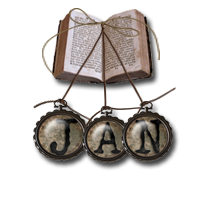Although I have not seen the movie based on Jeanne DuPrau’s book City of Ember (something I am going to correct soon), I did read the book when it was first published. I found the book an extremely well written science fiction and naturally had to read its sequel People of Sparks
(something I am going to correct soon), I did read the book when it was first published. I found the book an extremely well written science fiction and naturally had to read its sequel People of Sparks . Personally, I found People of Sparks to be more interesting because of how DePrau deals with survival after the devastation of war.
. Personally, I found People of Sparks to be more interesting because of how DePrau deals with survival after the devastation of war.
Even though many books have been written about post nuclear destruction, I have to admit the entire time I was reading the People of Sparks I kept marveling at what an awesome job DuPrau did on all the elements of both these two books. In City of Ember, it isn’t until the main characters escape the city that the reader totally understands the implications of the original setting ... a city built underground, encased in a dome to protect it from the disaster that the builders see coming in the future. Now, in People of Sparks, main characters, Lina and Doon are back and along with 400 Emberites have emerged from their dying city, only to find an unknown world devastated by war. This world has no technology. People use oxen to pull old trucks because no gas exists. It is a world where things such as money and jewels, are no longer valuable. Instead, matches are a priceless commodity. DuPrau’s descriptions of how the Emberites begin to grasp this world, which is so different from the enclosed world of Ember, is very realistic, and the reader is forced to view the horrible possibilities of just how real this scenario could be. Her portrayal of the people of Sparks also shows a firm understanding of characterization especially her extensive use of dialogue, and her deliberate choice of third person omniscient point of view to insure the reader’s ability to get into the thoughts of several important characters. The synergy of all these elements really helps the reader see the importance of the author’s message.
DePrau’s main theme throughout the book is that in order to avoid destruction, people must turn away from revenge, and be courageous enough to not indulge in pay back, but to find something good to give instead. The People of Sparks clearly shows us that revenge is a vicious cycle, and unless someone is willing to stop the cycle by doing something good, it will destroy everyone around it. DePrau effectively uses the climax to bring this message home. Both Lina and Doon manage to rise above the vengeful cycle and stop the eminent danger of the destruction not only of the people of Sparks but the people of Ember too. I hope you can tell just how much I not only enjoyed this book, but how I admire Jeanne DuPrau’s skill as an author. I highly recommend both books. However, I strongly suggest that to truly embrace DePrau message and talent, you read City of Ember first.






0 Delicious Comments:
Post a Comment